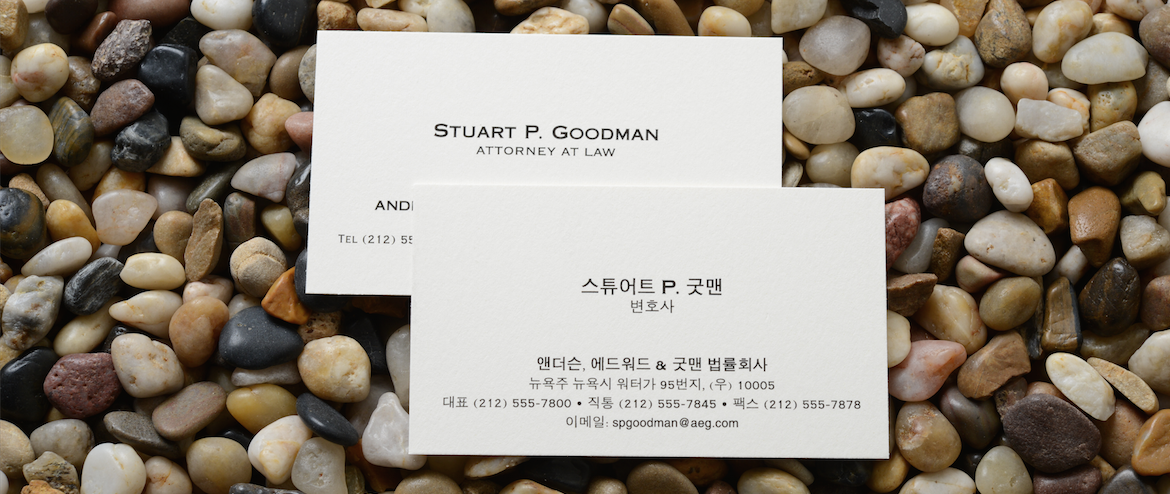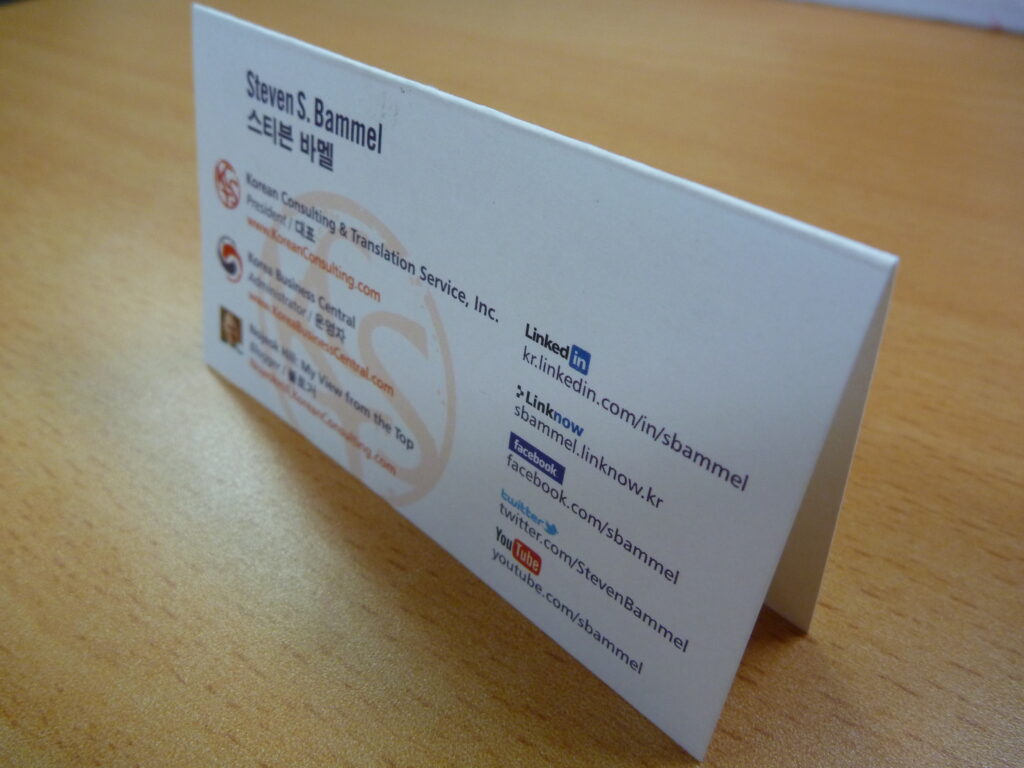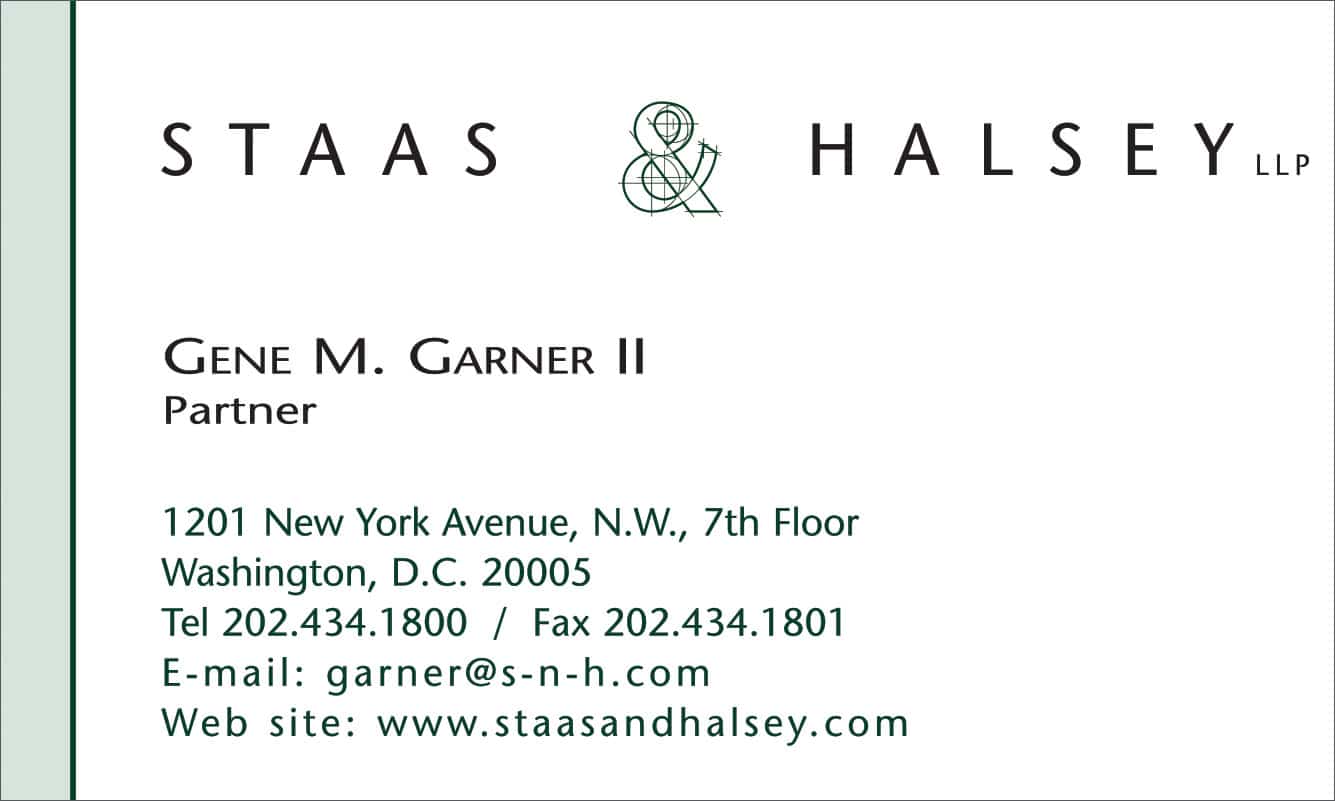
When it comes to doing business in Korea, understanding the cultural nuances is crucial. One aspect of Korean business culture that may catch foreigners off guard is the importance placed on business cards. In Korea, business cards are seen as a representation of one’s face and are exchanged with great care and respect.
To make a good impression in a professional setting in Korea, it is essential to have Korean business cards. These cards should be of high quality and reflect your position and company accurately. It is also important to know the proper etiquette when exchanging business cards in Korea, such as standing up and presenting the card with both hands. By following these customs, you can show that you respect Korean culture and are serious about doing business in the country.
Producing dual-sided Korean business cards is another way to show that you are sensitive to Korean culture. These cards should be translated accurately and reflect the correct titles and positions. By investing in high-quality Korean business cards and following the proper etiquette, you can make a strong impression in the Korean business world.
Understanding Korean Business Card Etiquette

When conducting business in Korea, it is important to understand and follow proper business card etiquette. This can help establish a good first impression and build trust with your Korean counterpart. Here are some key aspects to keep in mind:
Exchanging Business Cards
The exchange of business cards in Korea is a formal and respectful process. When exchanging cards, it is customary to use both hands and bow slightly as a sign of respect. As you receive the card, take a moment to read it carefully and acknowledge the person’s name and title. It is considered rude to immediately put the card away without acknowledging it.
Respect and Rank
Korean culture places a strong emphasis on respect and rank. Therefore, it is important to address your Korean counterpart by their appropriate title. When receiving someone’s card, say the person’s name and title out loud with a “-nim” at the end as a sign of respect. If you are unsure about the person’s position or title, ask for clarification. It is also important to avoid writing on someone’s business card, as this is considered disrespectful.
Punctuality in Business Meetings
In Korea, punctuality is highly valued in business meetings. It is recommended to arrive a few minutes early to show respect for your Korean counterpart’s time. If you are running late, it is important to notify the other party as soon as possible. Being punctual and respectful of time can help establish a good working relationship with your Korean business partners.
Overall, understanding and following proper business card etiquette in Korea can help establish a positive and respectful working relationship with your Korean counterparts. By taking the time to learn and follow these protocols, you can show respect for Korean culture and build trust with your business partners.
Designing a Korean Business Card


When designing a Korean business card, there are a few key elements to keep in mind to ensure that your card is effective and professional. Here are some tips to help you create a great Korean business card.
Key Elements
The key elements of a Korean business card include your name, title, company name, and contact information. It is important to include your name and title in both English and Korean to show respect for the language and culture. Your company name should also be included in both languages, with the Korean name appearing first.
In addition to your contact information, it is also common to include your logo on your Korean business card. Your logo should be clear and easy to read, and should be placed prominently on the card.
Bilingual Design
When designing a Korean business card, it is important to create a bilingual design that is easy to read and understand. This means that you should use a font that is clear and legible, and that your text should be large enough to be read easily.
You should also pay attention to the layout of your Korean business card. Your name and title should be placed at the top of the card, with your company name and contact information appearing below. Make sure that your text is aligned properly and that there is enough white space on the card to make it easy to read.
Logo and Company Name
Your logo and company name are important elements of your Korean business card. Your logo should be clear and easy to read, and should be placed prominently on the card. Your company name should be included in both English and Korean, with the Korean name appearing first.
When designing your Korean business card, it is important to choose a font that is easy to read and that will make your logo and company name stand out. You should also pay attention to the color scheme of your card, and choose colors that are appropriate for your industry and that will make your card stand out.
In conclusion, designing a Korean business card requires attention to detail and respect for the language and culture. By including your name, title, company name, and contact information in both English and Korean, using a clear and legible font, and paying attention to the layout and design of your card, you can create a professional and effective Korean business card that will help you make a great first impression.
Translating Business Cards for the Korean Market
If you are a foreigner doing business in Korea, having a Korean business card is essential. It is a sign of respect and shows that you are serious about doing business in the Korean market. However, creating a Korean business card can be a daunting task, especially if you do not speak the language. That’s where professional translation services come in.
Translation Process
The first step in creating a Korean business card is to translate your existing card into Korean. You can do this by typing the information from your card into a translation service like MotaWord or by hiring a professional translator. It is important to ensure that the translation is accurate and that the Korean text is properly formatted.
Contact Information
Your Korean business card should include all of the same contact information as your existing card, including your name, job title, phone number, and email address. However, it is important to note that the order in which this information is presented on a Korean business card is different from that of a Western business card. In Korea, the order is typically: name, job title, company name, phone number, and email address.
Free Quote Form
If you are interested in having your business card translated into Korean, many professional translation services offer a free quote form on their website. This form allows you to input your contact information and upload your existing business card for a quick and easy quote. Once you have received your quote, you can decide whether or not to proceed with the translation process.
In conclusion, having a Korean business card is essential for doing business in Korea, and professional translation services can help make the process easy and stress-free. By following these simple steps, you can create a professional and effective Korean business card that will help you succeed in the Korean market.
How to Distribute and Store Korean Business Cards


When it comes to distributing and storing Korean business cards, there are a few key things to keep in mind. Here are some tips to help you navigate this important aspect of Korean business culture.
Business Card Holder
One of the most important things you can do to show respect for Korean business culture is to invest in a high-quality business card holder. This will help you keep your cards in pristine condition, and it will also show that you take your business relationships seriously.
When choosing a business card holder, look for one that is made from high-quality materials and has a professional appearance. Leather or metal are both good options, and you may want to choose a holder that has your company logo or name on it.
Search and Print
Before you attend a business meeting or event in Korea, it’s a good idea to do some research on the people you will be meeting with. This will help you understand their position and status within their company, and it will also help you prepare for your meeting.
One way to do this is to search for their name and company online. You may be able to find their LinkedIn profile or other professional information that will give you a better understanding of who they are and what they do.
Another important aspect of Korean business card etiquette is printing your own cards. Make sure to include both English and Korean translations, and use a high-quality printer to ensure that your cards look professional.
Overall, distributing and storing Korean business cards is an important part of building strong business relationships in Korea. By investing in a high-quality business card holder and doing your research before meetings, you can show respect for Korean culture and make a great impression on your business partners.
Oliver dives into graphic design, branding, and marketing with passion. Beyond pixels and paper, he’s into boxing, CrossFit, and all things fitness. Oliver’s writing reflects his expertise and dedication to staying on top of industry trends.